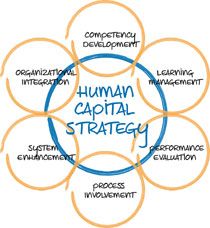To Market, To Market - Handling the Results
 Recently while coaching an executive, she explained that she had had a busy week of meetings. One of these meetings happened to be a Board Meeting. Asking her what was discussed, she said, there were just a few general items. One of these “general items” was a new marketing campaign. The executive also mentioned that she was on the Marketing Committee. I asked how the Marketing Committee would be interacting with the new marketing campaign. She informed me that the marketing committee had not met since the organization had acquired seven new offices from a competitor almost a year earlier. Questioning how this was, she explained that everyone had just been too busy.
Recently while coaching an executive, she explained that she had had a busy week of meetings. One of these meetings happened to be a Board Meeting. Asking her what was discussed, she said, there were just a few general items. One of these “general items” was a new marketing campaign. The executive also mentioned that she was on the Marketing Committee. I asked how the Marketing Committee would be interacting with the new marketing campaign. She informed me that the marketing committee had not met since the organization had acquired seven new offices from a competitor almost a year earlier. Questioning how this was, she explained that everyone had just been too busy.
We then began to discuss an upcoming marketing campaign the organization was about to launch between May and August. As it turns out there are actually three marketing campaigns going on between May and August. Two will target new customers and one will target current customers for new products and services. I began asking her about how many new customers the organization might acquire through one of its campaigns prior to the acquisition. She said about 15. We then calculated how the acquisition might increase that number. We then did this with each of the campaigns. After all of the calculating, it was determined that this organization could be looking at around 540 new customers or additional accounts from existing customers. Can your organization accommodate such growth in a four-month period? What systems and services would your organization need to have in place to ensure smooth growth? Examples might include the following.
 One of the biggest drainers on a manager’s time, energy and productivity are underperformers. The reason these folks are such a drain is partly the manger’s own fault. Here’s why. Managers often do not know how to address these time eating, energy draining and productivity-robbing individuals. More often than not, it’s procrastination. The reason this task is procrastinated is that the manager dreads having such conversations. The conversation must take place.
One of the biggest drainers on a manager’s time, energy and productivity are underperformers. The reason these folks are such a drain is partly the manger’s own fault. Here’s why. Managers often do not know how to address these time eating, energy draining and productivity-robbing individuals. More often than not, it’s procrastination. The reason this task is procrastinated is that the manager dreads having such conversations. The conversation must take place.




